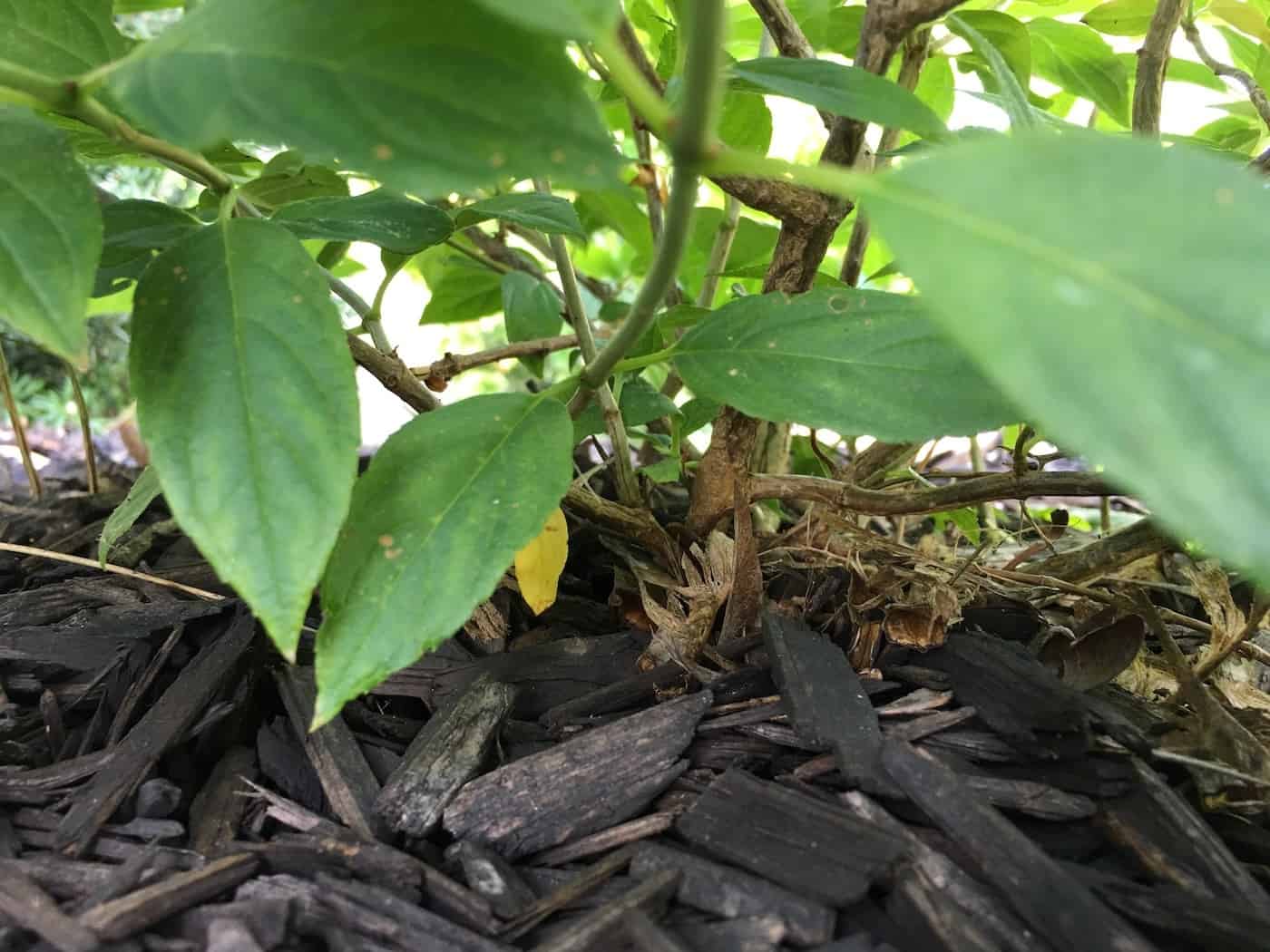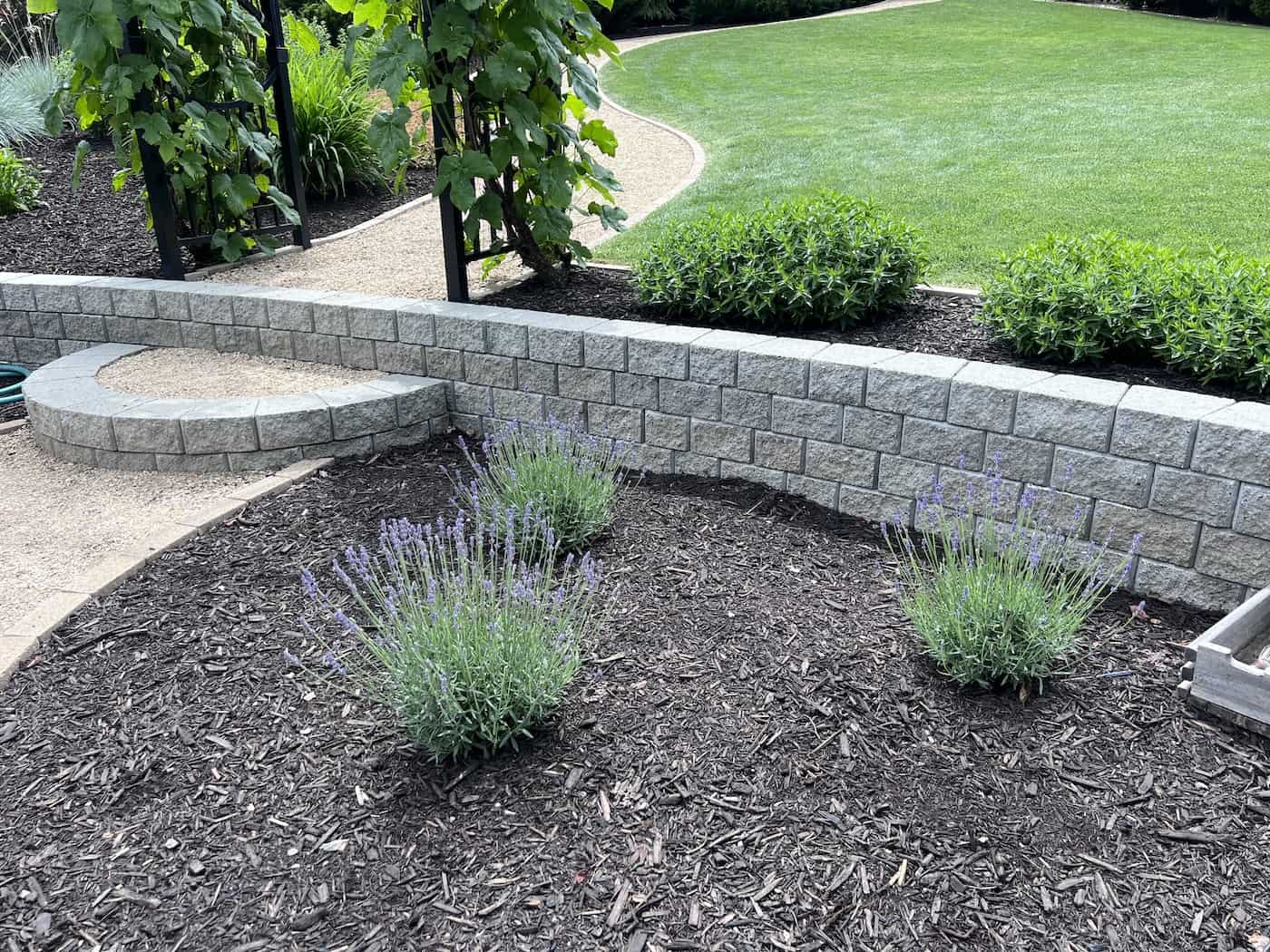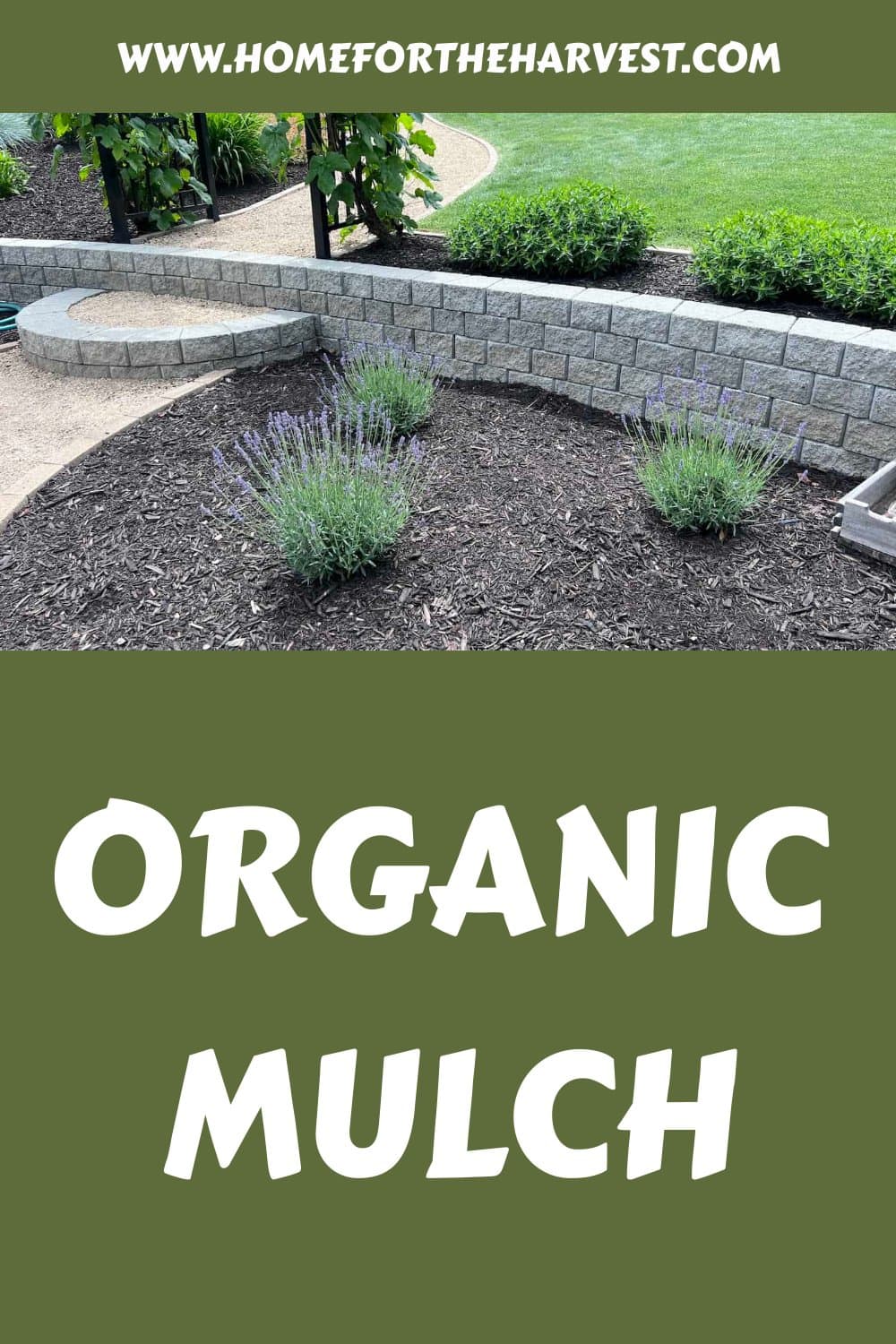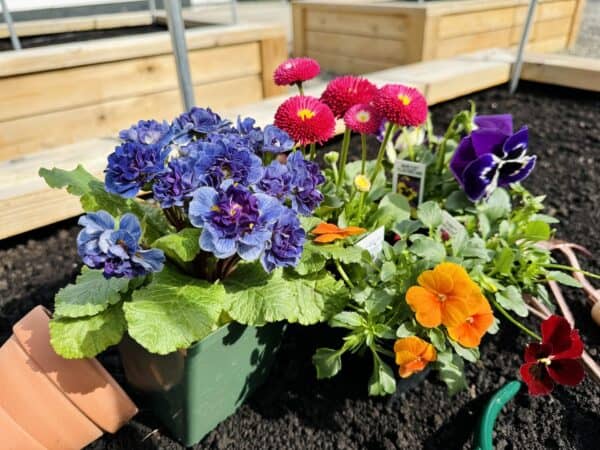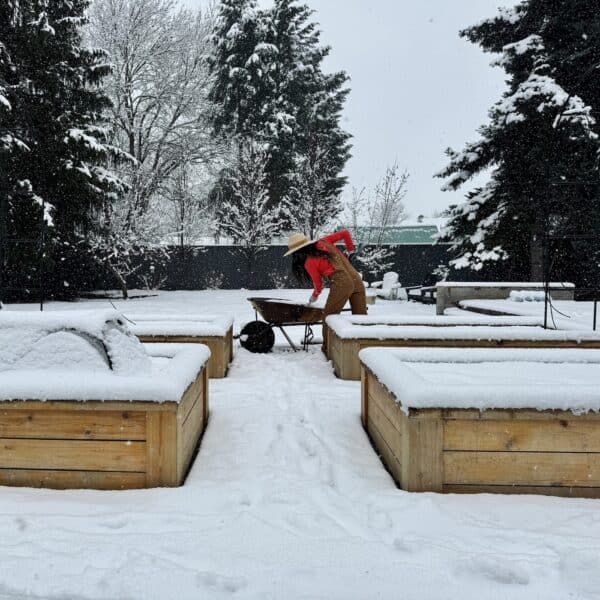Organic mulch is a biodegradable material used to cover a garden’s soil surface. It’s biodegradable. These types of mulches are derived from natural sources, including composted leaves, bark chips, pine needles, composted yard trimmings, straw, and grass clippings. Organic mulch improves soil quality as it decomposes, helps retain soil moisture, suppresses weeds, and regulates soil temperature.
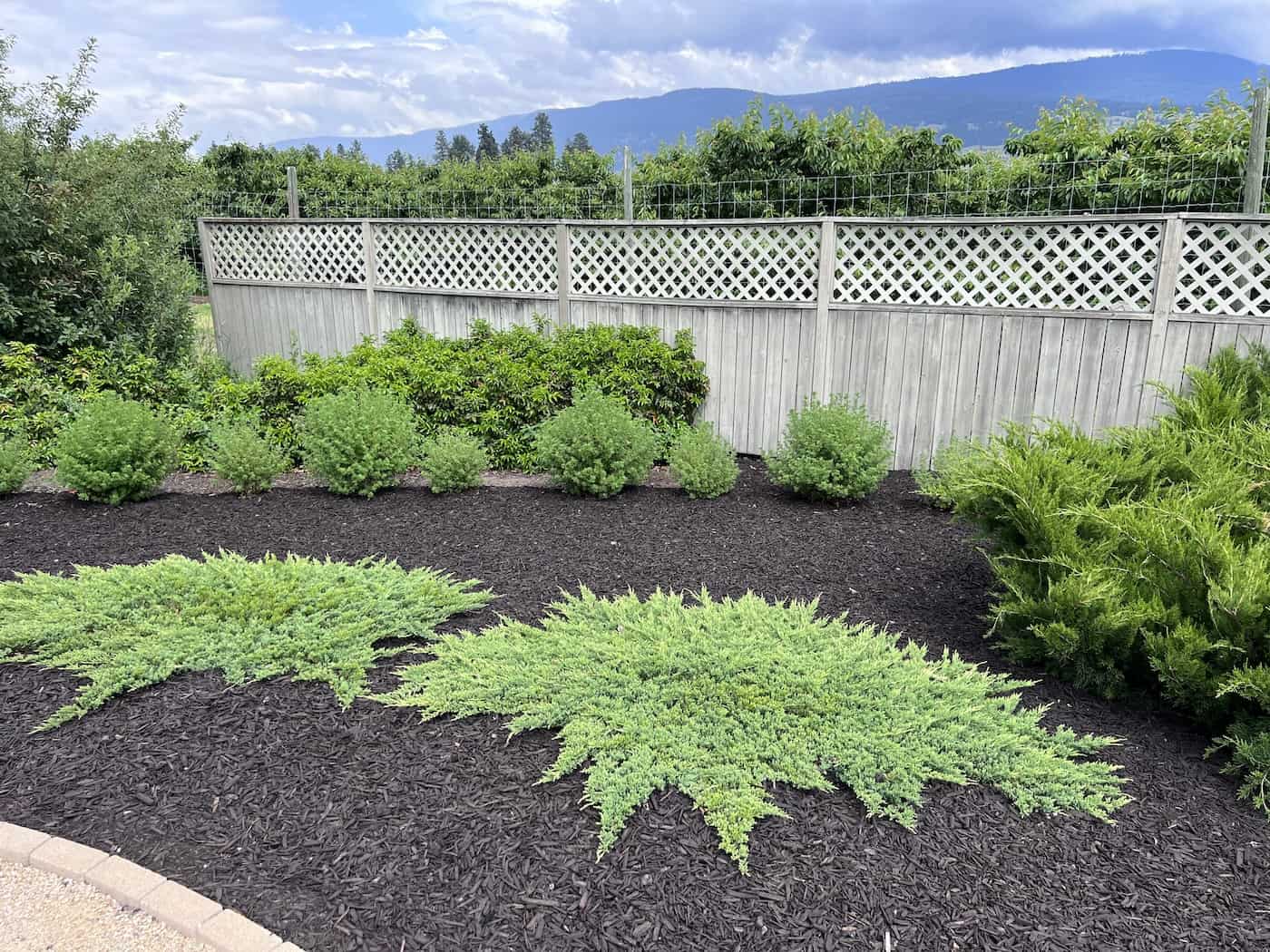
Organic mulch in gardening
Organic mulch is versatile and beneficial in various types of gardens. Different mulches work best in different applications, and some mulches are only available in limited geographical areas. Fine mulches are used more commonly in vegetable gardens, while coarser mulches are used in flower gardens, woodland gardens, and landscaping beds.
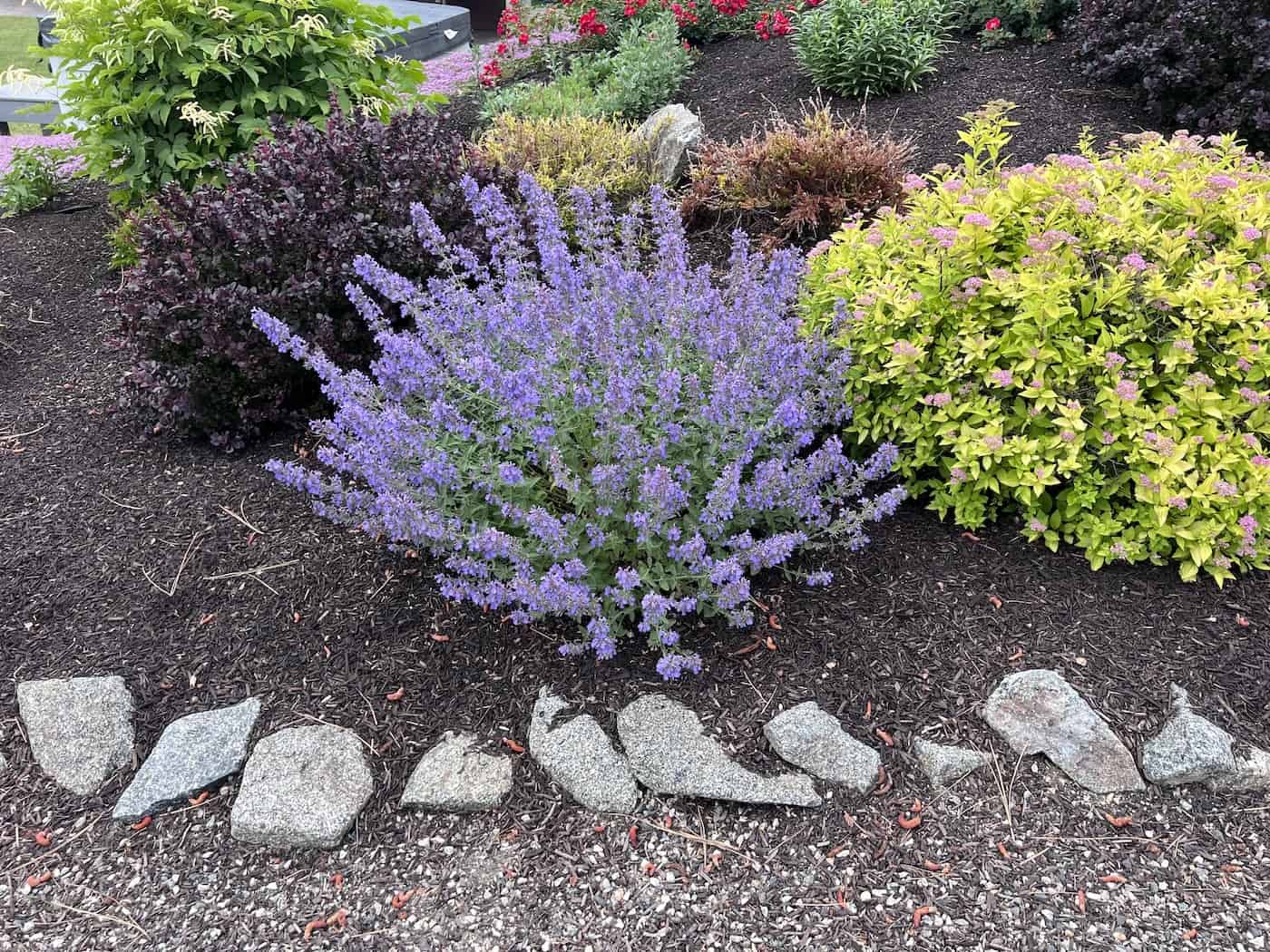
In vegetable gardens, using fine-particle mulches like homemade compost, straw, or grass clippings is highly effective. These materials help keep the soil moist and cool, which is essential for vegetable growth. They also suppress weeds and gradually add nutrients back into the soil as they decompose. Similarly, in herb gardens, these types of mulches maintain the consistent moisture and temperature levels that herbs thrive in.
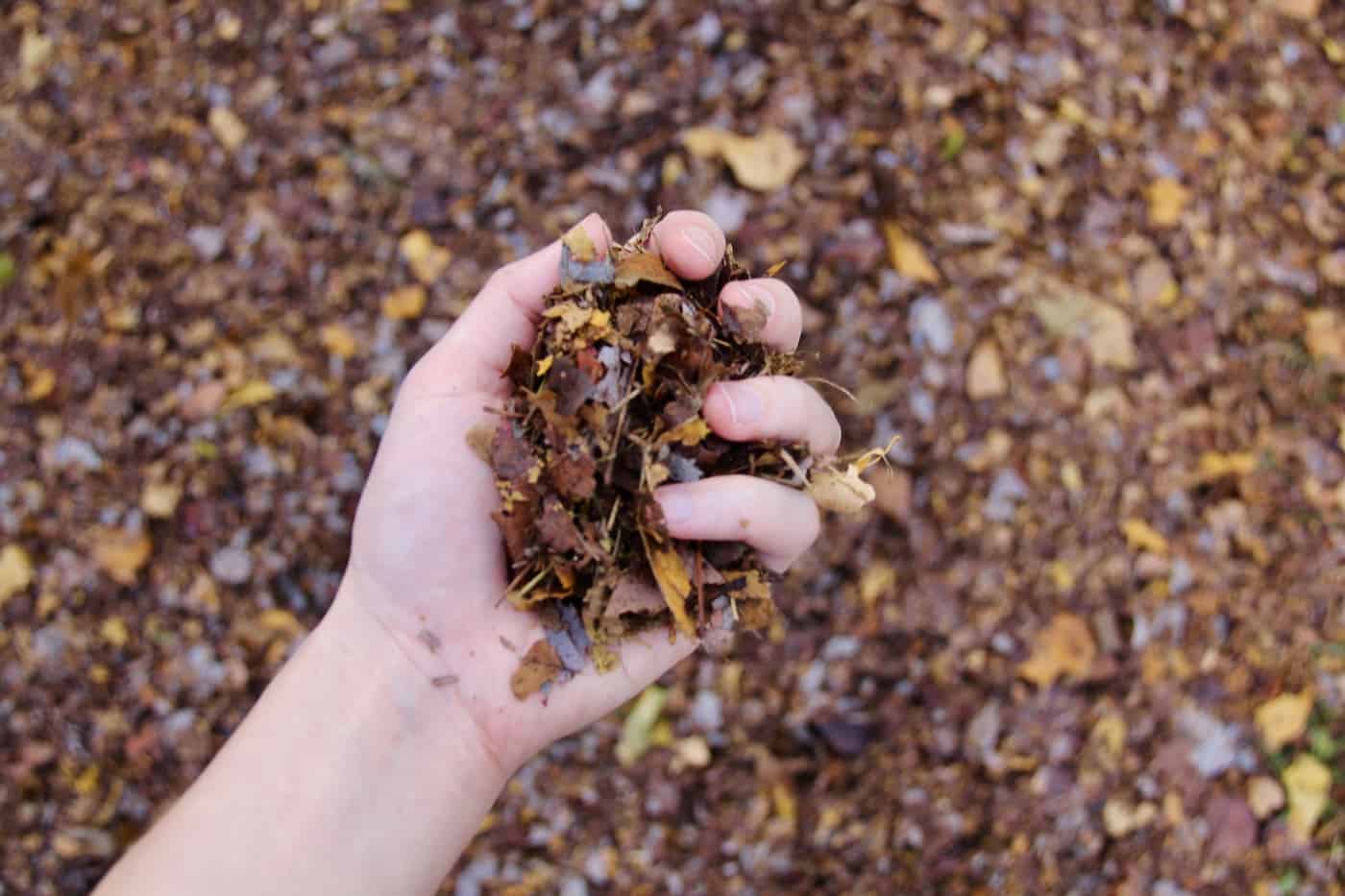
For flower gardens and landscaping beds designed for curb appeal, bark chips or composted yard trimmings are more suitable. These larger particles retain soil moisture, control weeds, and add a unifying aesthetic element to these gardens. Their decomposition process enhances soil fertility over time, benefiting the long-lived shrubs and trees. Likewise, in shade gardens, leaf mulch is particularly beneficial as it mimics the natural environment of a forest floor, improving soil structure and fertility.
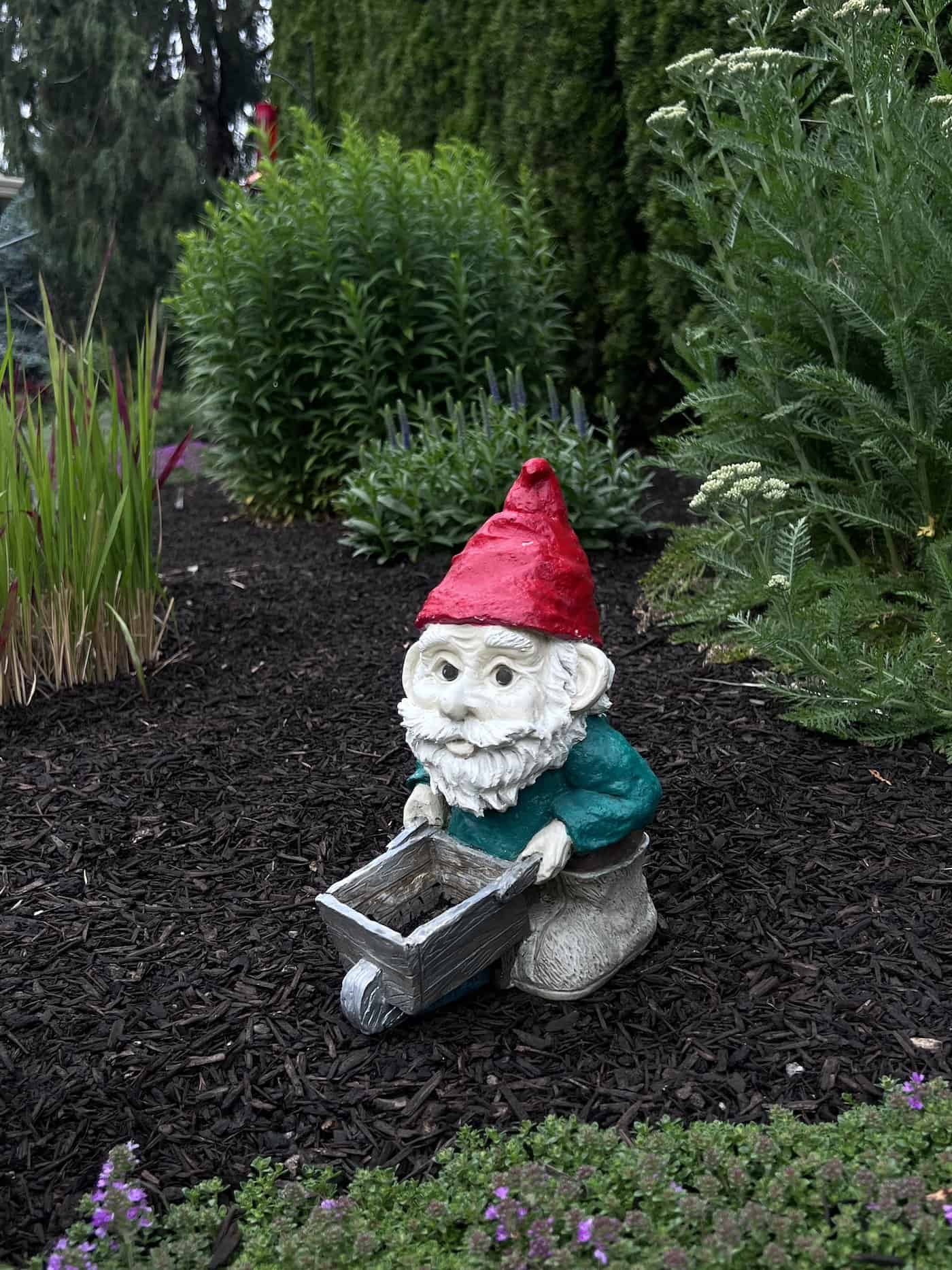
Organic mulch also plays a vital role in the health and maintenance of fruit bushes and trees. Wood chips or bark mulch are ideal for these plants. They help retain moisture around the root systems, suppress weed growth, and add nutrients to the soil as they break down.
In addition to these traditional garden types, organic mulch is useful in other landscaping features. Wood chips create a natural look and a softer walking surface for pathways in gardens, besides suppressing weed growth. In sloped areas, heavier mulches like bark nuggets can help mitigate soil erosion.
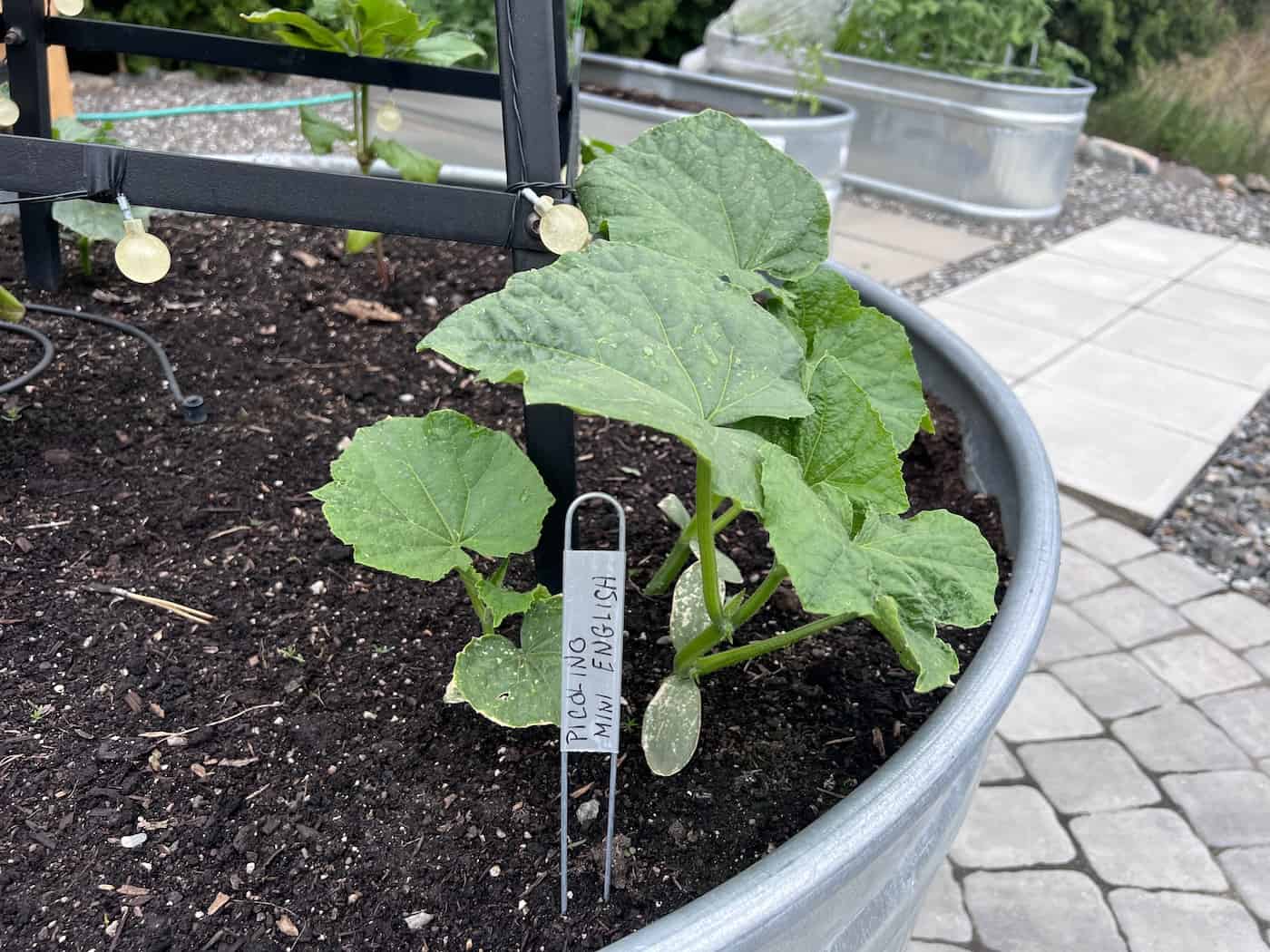
Homemade compost as mulch
Homemade compost is an excellent organic mulch choice for various yard applications due to its rich nutrient content and soil conditioning properties. As a mulch, compost is nutritious and also quite fine. It can be used alone in frequently worked areas like the vegetable garden but usually needs to be topped with coarser material in landscaped garden beds.
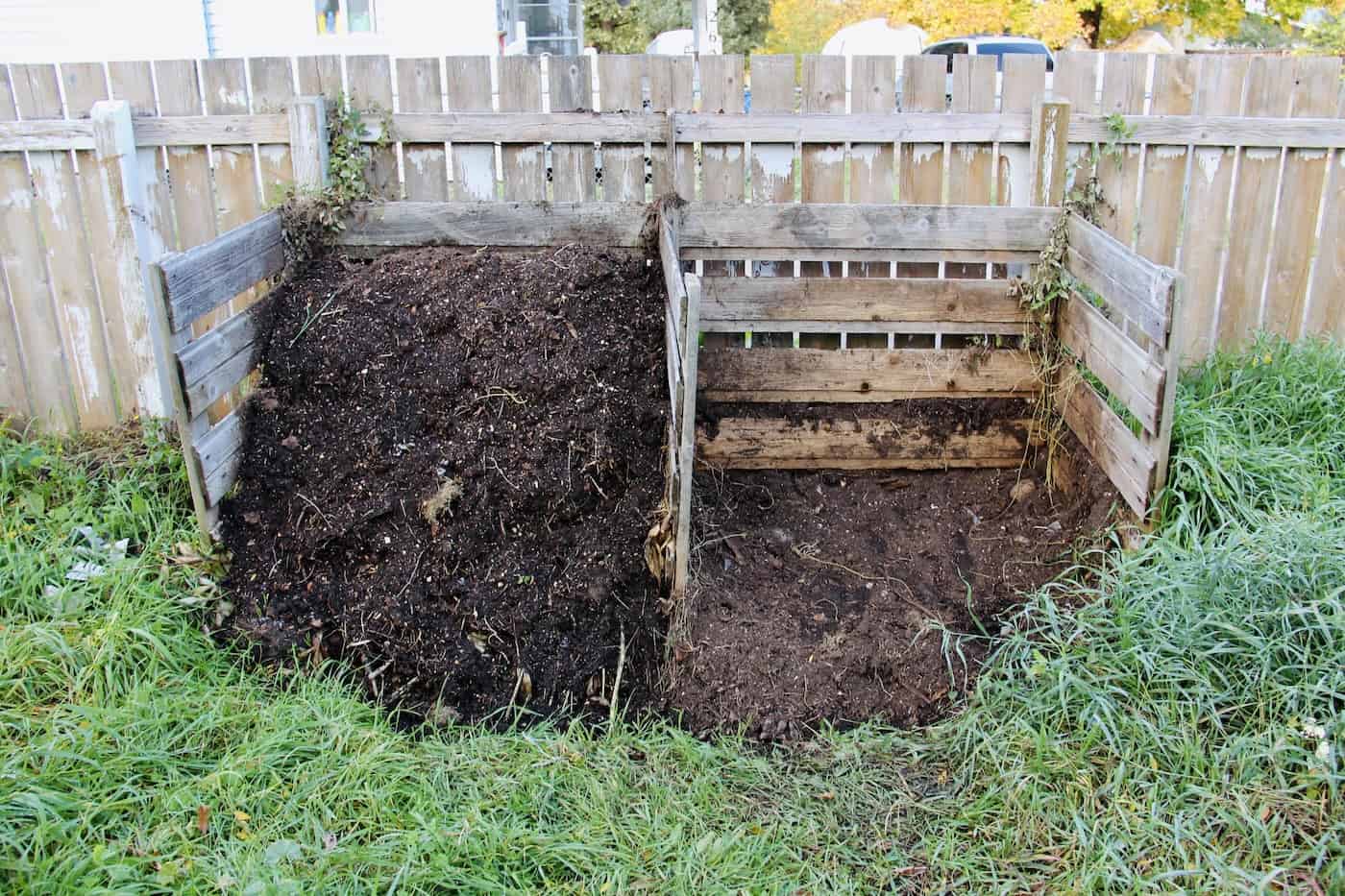
Spreading a layer of compost around the base of plants helps retain soil moisture, which is essential for consistent growth. It also regulates soil temperature and adds vital nutrients, which are gradually released into the soil, enhancing plant health and yield. The compost mulch also acts as a barrier against weed growth by shading out weed seeds, reducing the need for frequent weeding.
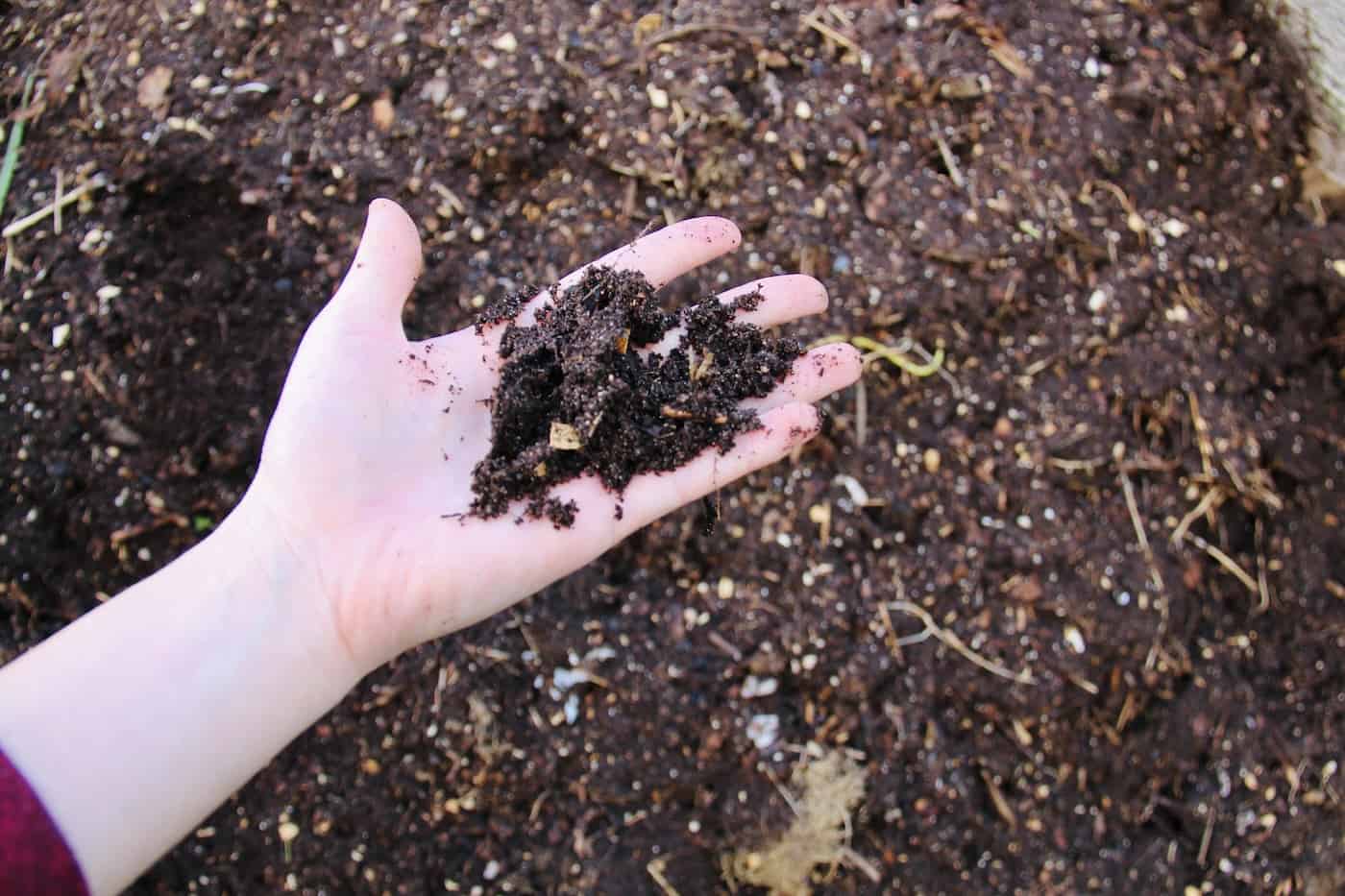
In flower beds and landscaping areas, homemade compost mulch is both aesthetic and functional. It creates a neat and natural-looking dark uniform layer that complements the beauty of flowering plants. The compost improves the soil’s structure and fertility, fostering healthier plants.
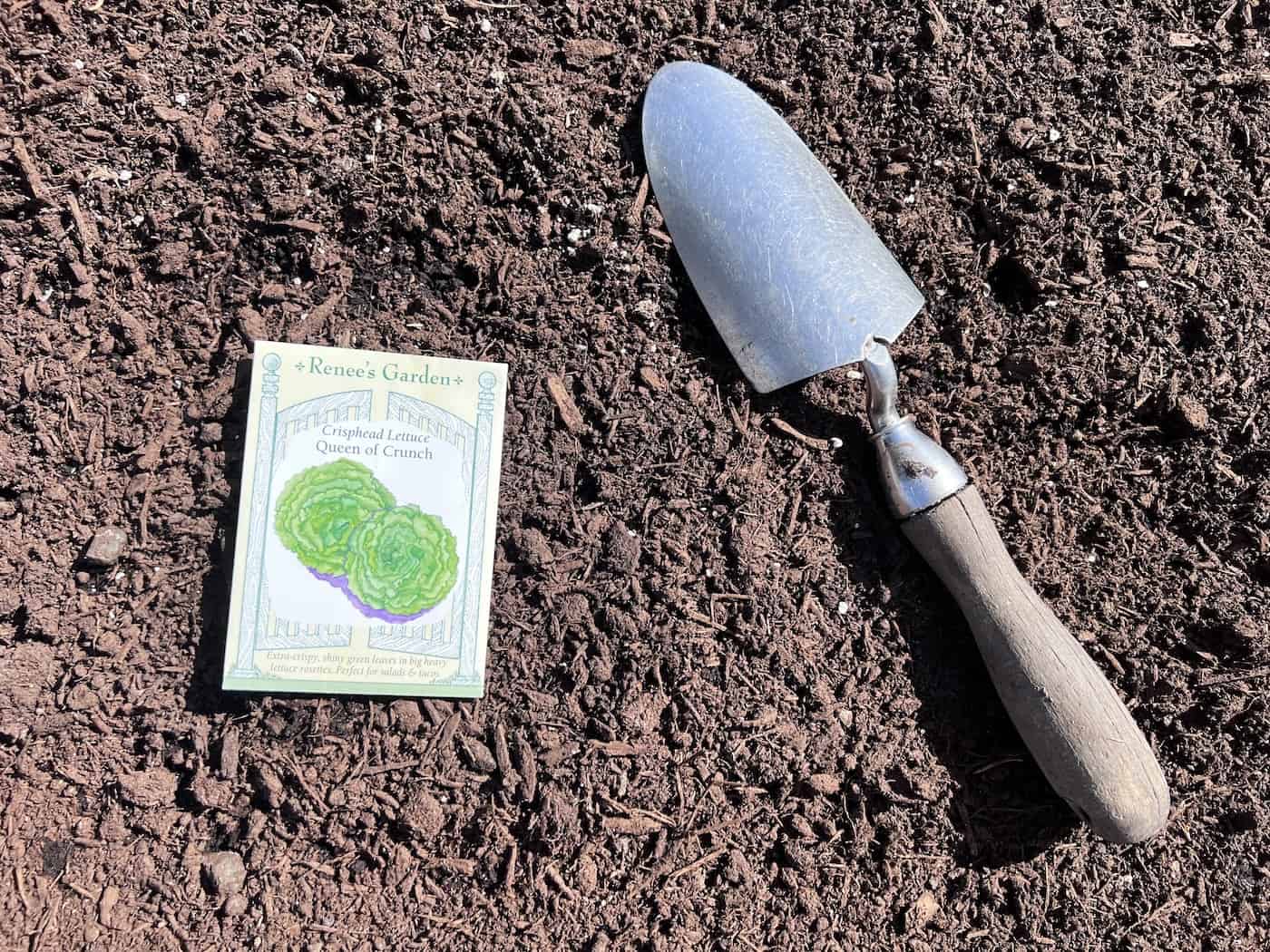
The compost’s ability to suppress weeds and retain moisture makes it a low-maintenance yet highly effective mulching option for these areas. Compost is usually quite fine and can easily blow or wash away. Most gardeners top their compost layer with a coarser layer such as composted yard trimmings in their flower beds and other ornamental gardens.
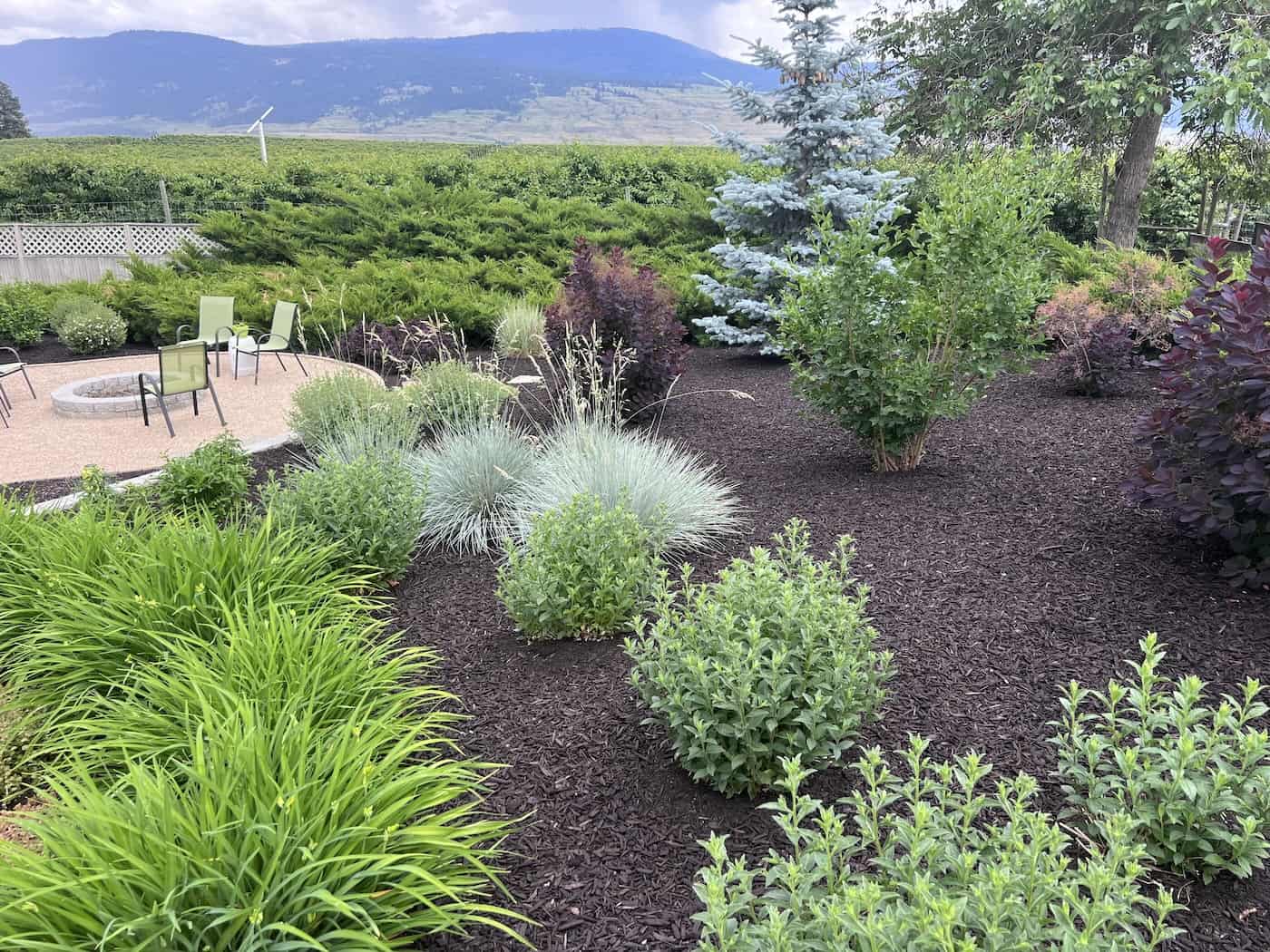
Wood chip mulch
Freshly cut wood chips are a valuable organic mulch option for various landscaping needs due to their durability and visual appeal. They are especially beneficial in landscaping beds and around trees and shrubs. Many wood chips used for mulch are now dyed for aesthetic appeal (usually brown, red, or black).
Wood chips provide a natural, rustic look that enhances the aesthetic of the yard. When applied around the base of trees and shrubs, they help retain soil moisture, which is essential for the health of these plants. They also suppress weed growth, reducing the need for frequent maintenance. The slow decomposition rate of wood chips means they enrich the soil with organic matter over a longer period, providing long-term benefits to the soil structure and fertility.
For pathways and recreational areas in the yard, freshly cut wood chips serve as an excellent ground cover. They create a stable and visually appealing walkway, blending seamlessly with the natural landscape. The wood chips are comfortable underfoot and provide a durable, low-maintenance surface that withstands regular foot traffic. Additionally, they are effective in suppressing weed growth along pathways, keeping these areas neat and tidy. Their ability to withstand compaction and erosion makes them a practical choice for high-traffic areas in the garden.
In vegetable gardens and flower beds, freshly cut wood chips can be used with caution. While they are effective in moisture retention and weed suppression, it’s important to consider their potential to temporarily reduce nitrogen levels in the soil as they decompose. To counteract this, gardeners can add a nitrogen-rich supplement to the soil or use wood chips as a top layer without mixing them into the soil.
Wood chips are often dyed. Sometimes nitrogen-rich materials are added to offset the high amount of carbon in wood chips. Be sure to check what your mulch contains, as some are dyed with ash while others are mixed with sewage biosolids. Choose your wood mulch carefully!
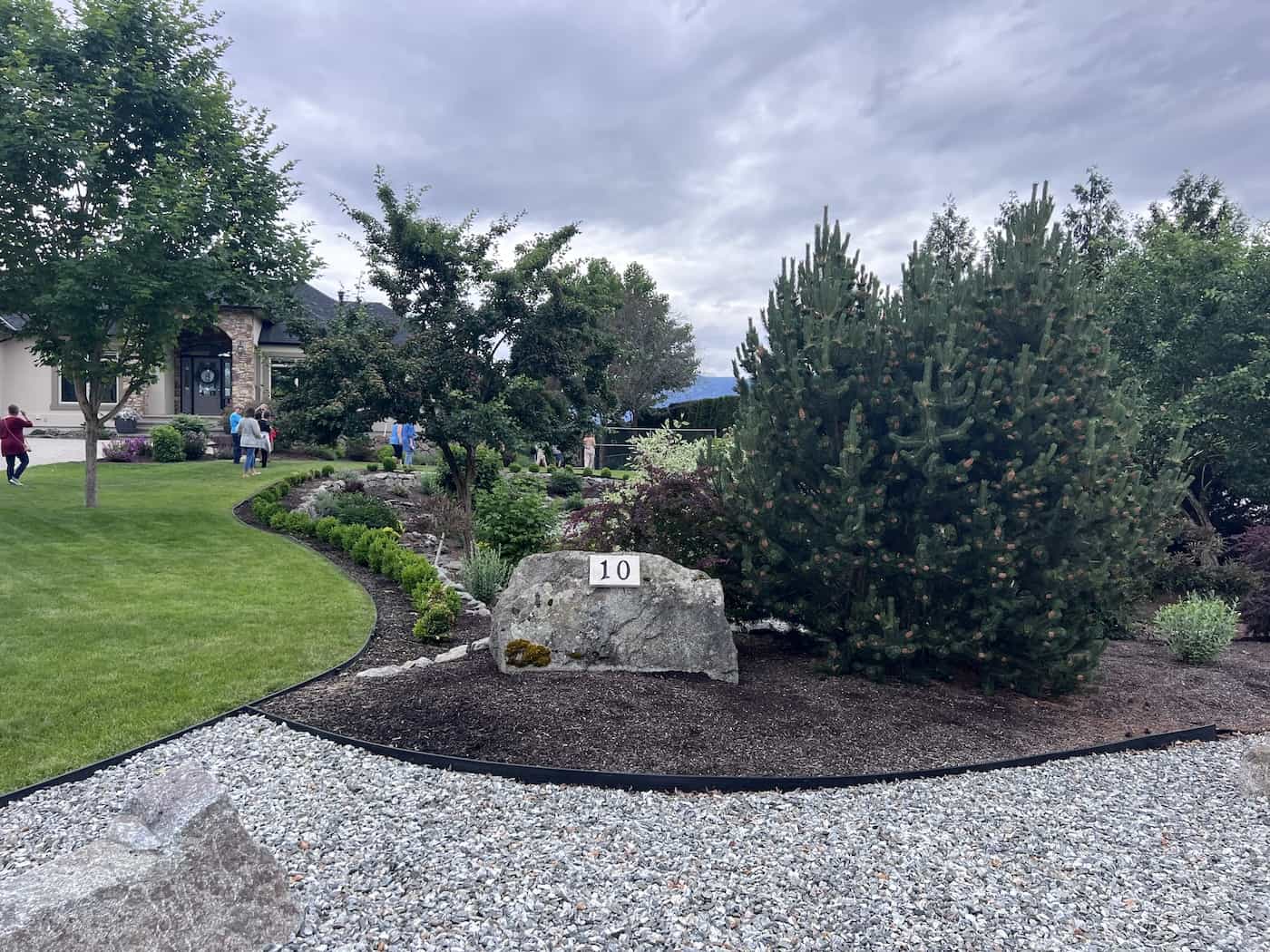
Composted yard waste trimmings as mulch
Composted yard waste trimmings are becoming a popular mulch that brings numerous benefits to different areas of the yard. The composted trimmings help maintain consistent moisture levels in the soil, which is crucial for the growth of healthy plants. This mulch also aids in temperature regulation and provides a natural barrier against weeds, reducing the need for chemical herbicides.
Composted arborist trimmings offer aesthetic and functional advantages for flower beds and ornamental gardens. The rich, dark color of many of these mulches adds visual depth to the garden, highlighting the beauty of the flowers. The composted trimmings also suppress weed growth and retain soil moisture, making garden maintenance more manageable and reducing the need for frequent watering.
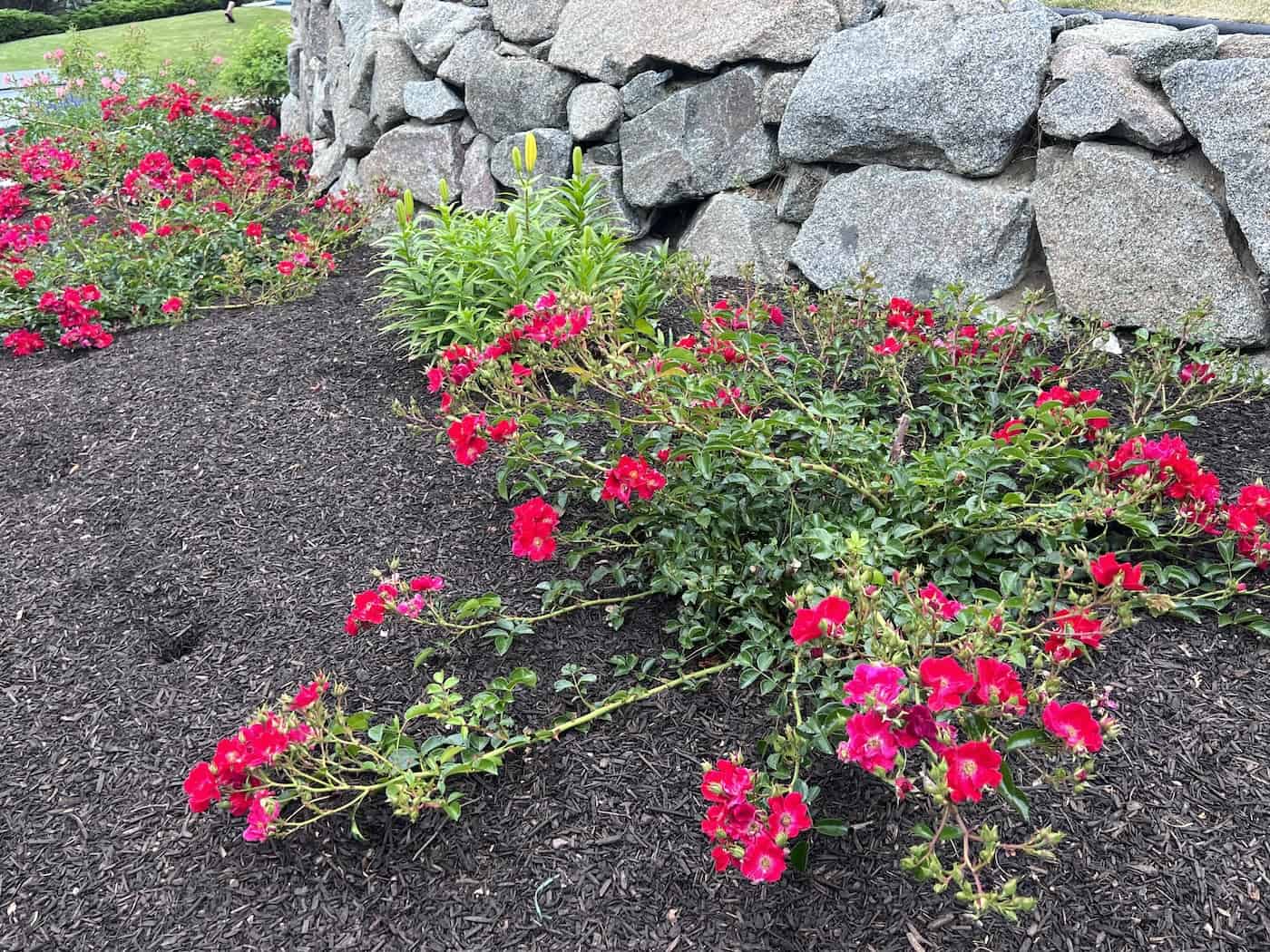
Composted yard waste trimmings in landscaping around trees and shrubs create a natural-looking cover that blends well with the surrounding landscape. As the trimmings break down, they continuously feed the soil, enhancing its nutrient content and promoting the growth of beneficial microorganisms. This results in a healthier and more resilient landscape, with trees and shrubs that are better equipped to withstand pests and diseases.
You can source composted shredded yard trimmings from select arborists and garden centers. Some municipalities collect yard trimmings from the curb and use them to make a similar mulch, which is often distributed at the landfill. You can even make your own mulch with composted yard trimmings right at home with a chipper/shredder machine.
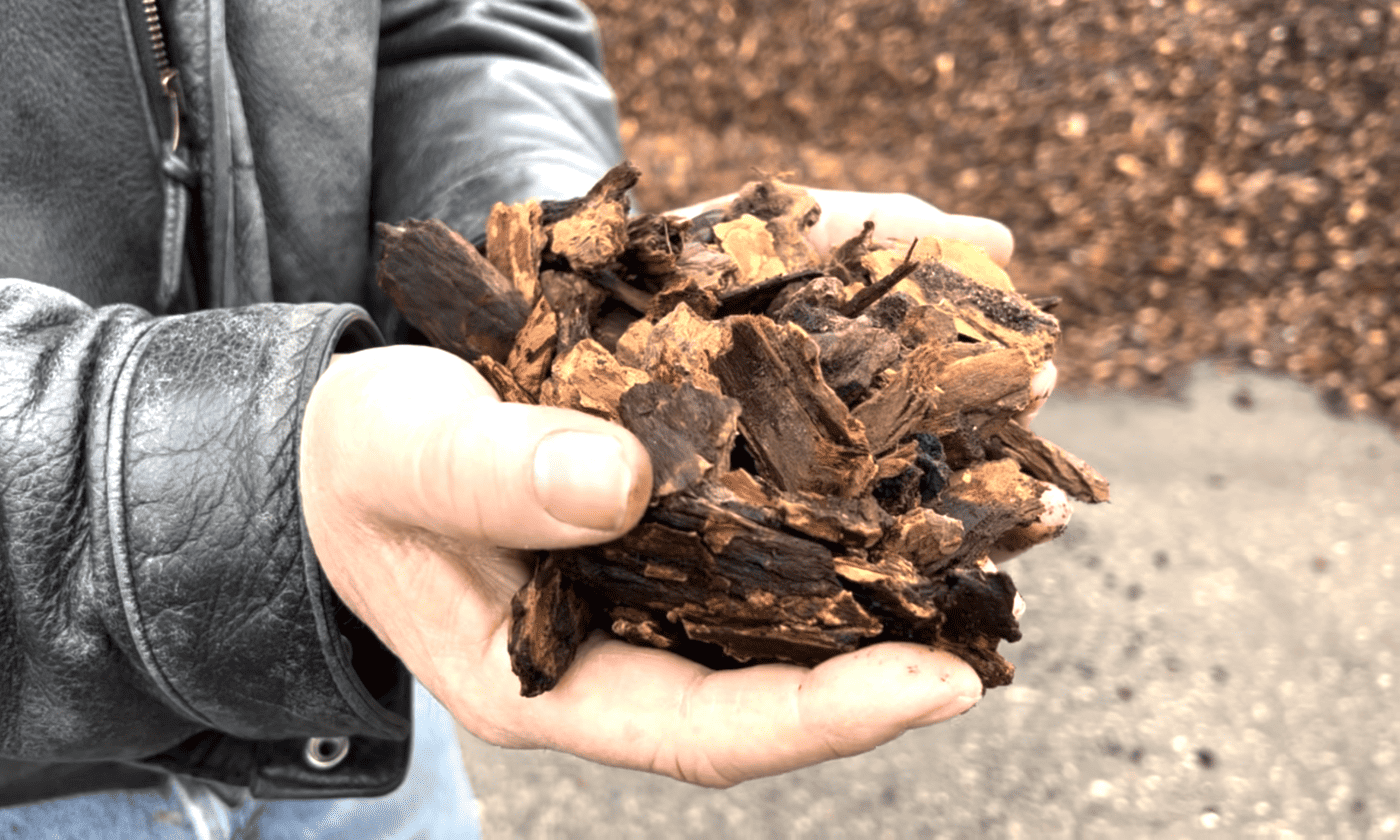
Bark nuggets as mulch
Bark nuggets, derived from various tree barks, are a popular organic mulch choice for many landscaping applications due to their durability and aesthetic appeal. Bark nuggets provide a natural look in flower beds and ornamental gardens. They are particularly effective in these settings as they decompose slowly, providing a long-lasting mulch layer that doesn’t need frequent replenishment. This slow decomposition also helps in gradually enriching the soil with organic matter.
Bark nuggets are an excellent choice for use around larger, long-lived plants like trees and shrubs. They create a clean, organized appearance. The nuggets help maintain consistent soil moisture and protect the root systems from extreme temperatures, both in the heat of summer and the cold of winter.
Their weight and size make them less likely to be displaced by wind or rain, ensuring stable coverage and protection for the soil. This larger size and weight make them more stable than finer mulches, so they stay in place better, providing a durable and attractive walkway surface. This stability also makes them suitable for sloped areas where erosion control is important.
While they offer these practical benefits, it’s important to note that bark nuggets can be less effective in nutrient contribution compared to finer organic mulches. However, their aesthetic appeal and longevity make them a favored choice for many gardeners looking to enhance the beauty and functionality of their outdoor spaces.
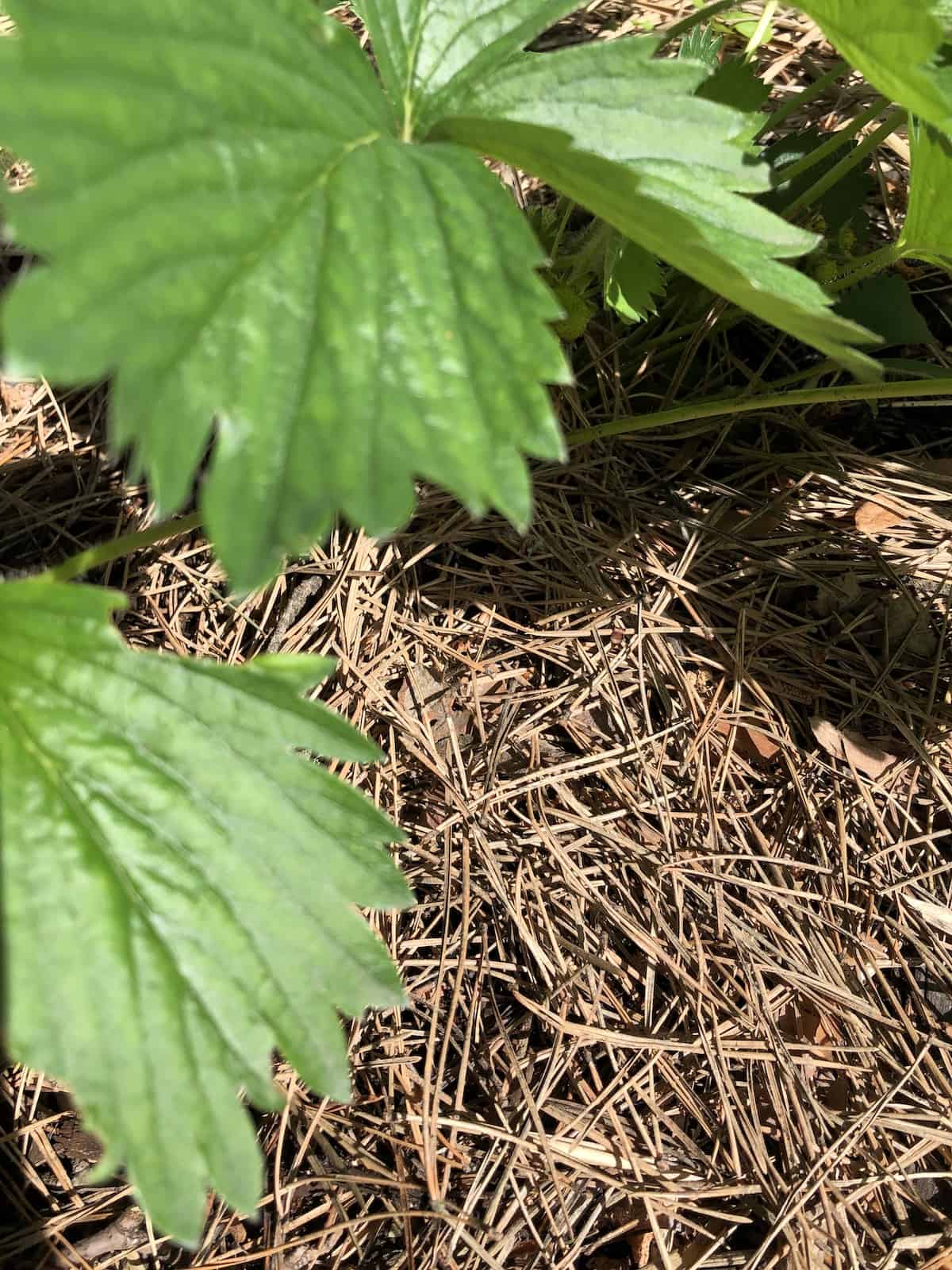
Pine needle mulch
Pine needles, often referred to as pine straw, are an excellent choice for organic mulch in various yard applications. Pine needles form a lightweight yet effective mulch layer that allows for easy water penetration and air circulation. Their slender and interlocking nature helps them stay in place, making them a great option for mulching sloped areas in the garden where erosion control is needed.
Pine needles are particularly beneficial in acidic soil-loving plant areas, like those for azaleas, rhododendrons, and blueberries. They can sometimes slightly lower the pH of the soil as they decompose, creating an ideal environment for these acid-loving plants.
In vegetable gardens, pine needles can be used as a mulch to help maintain moisture levels in the soil and suppress weed growth. Their airy structure doesn’t compact over time, ensuring that the soil beneath remains well-aerated and moist. This is particularly beneficial during the hot summer months when water conservation becomes crucial. While pine needles may slightly acidify the soil, their gradual and moderate effect makes them suitable for most vegetables.
Pine needles offer an aesthetically pleasing and practical mulching solution for general landscaping and ornamental beds. They give the garden a clean, natural look and are especially fitting in rustic or woodland-themed landscapes. Unlike some heavier mulches, pine needles are easy to spread and refresh as needed. They are also a sustainable choice, particularly if sourced locally from pine trees on or near the property.
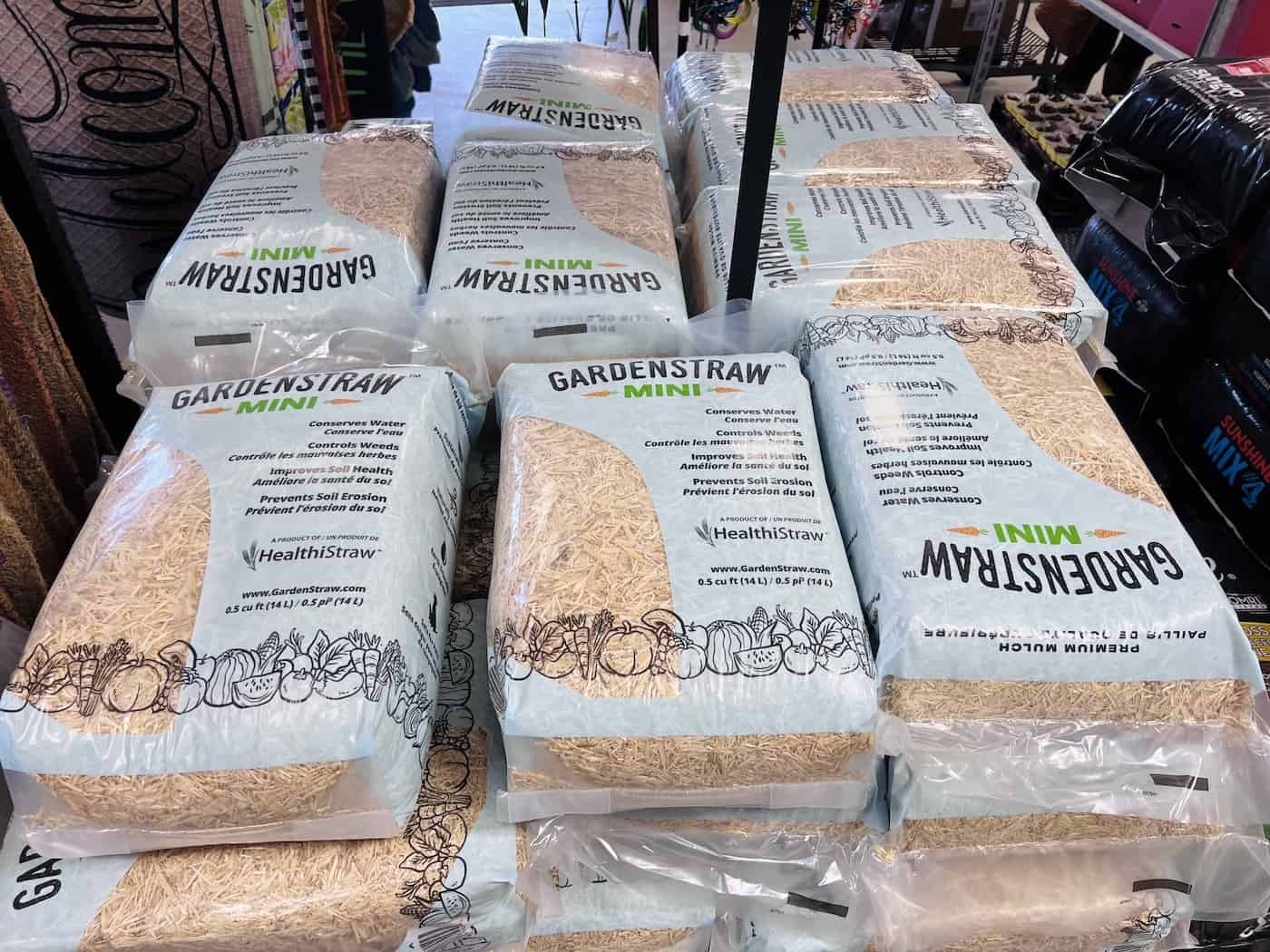
Straw as mulch
Straw is a highly effective organic mulch choice for various garden applications due to its lightweight nature and excellent insulation properties. In vegetable gardens, straw is particularly beneficial. It provides an excellent barrier against soil evaporation, keeping the ground moist and cool, which is essential for the healthy growth of vegetables.
The air pockets within the straw help maintain soil temperature, protecting the roots from extreme heat in summer and cold in winter. Straw also suppresses weed growth by blocking sunlight, reducing the need for frequent weeding. Furthermore, as straw decomposes, it adds organic matter to the soil, gradually improving soil structure and fertility. However, applying straw mulch correctly is important, ensuring it’s not too thick to prevent over-insulation and potential rot in more sensitive plants.
For newly seeded lawns or grass repair areas, straw serves as an ideal cover. It protects the seeds from birds, helps retain the moisture necessary for germination, and keeps the seeds in place, preventing them from being washed away by rain or watering. The straw’s insulating properties create a microclimate that supports quicker seed germination and growth. As the grass grows, the straw naturally decomposes, adding organic nutrients to the soil and enhancing the overall health of the lawn.
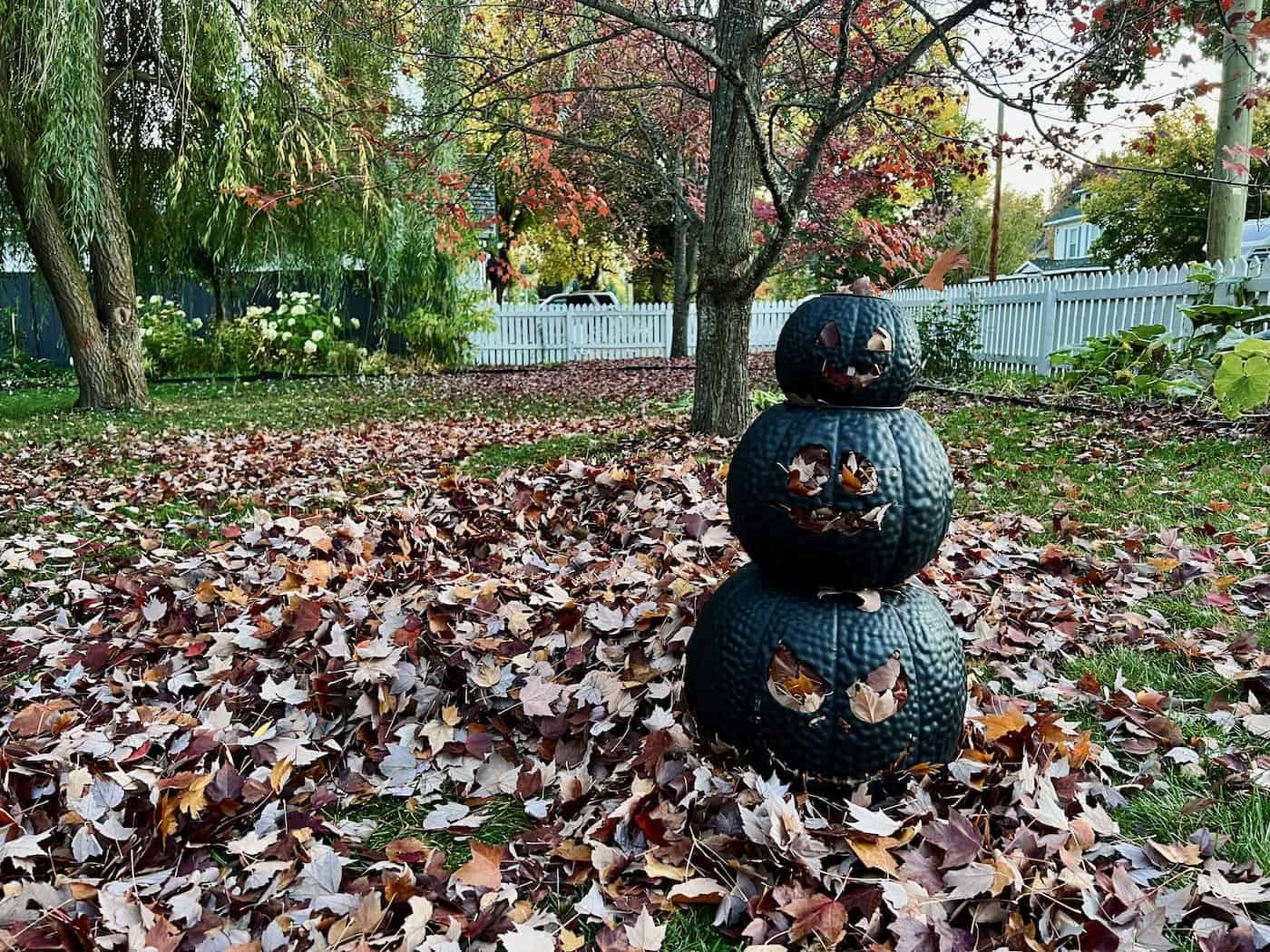
Leaf mulch
Autumn leaves, whether shredded or whole, serve as an excellent organic mulch for various applications in the yard. As a mulch, they help retain soil moisture, reducing the need for frequent watering. The leaves also offer insulation, protecting plant roots from temperature fluctuations in colder months.
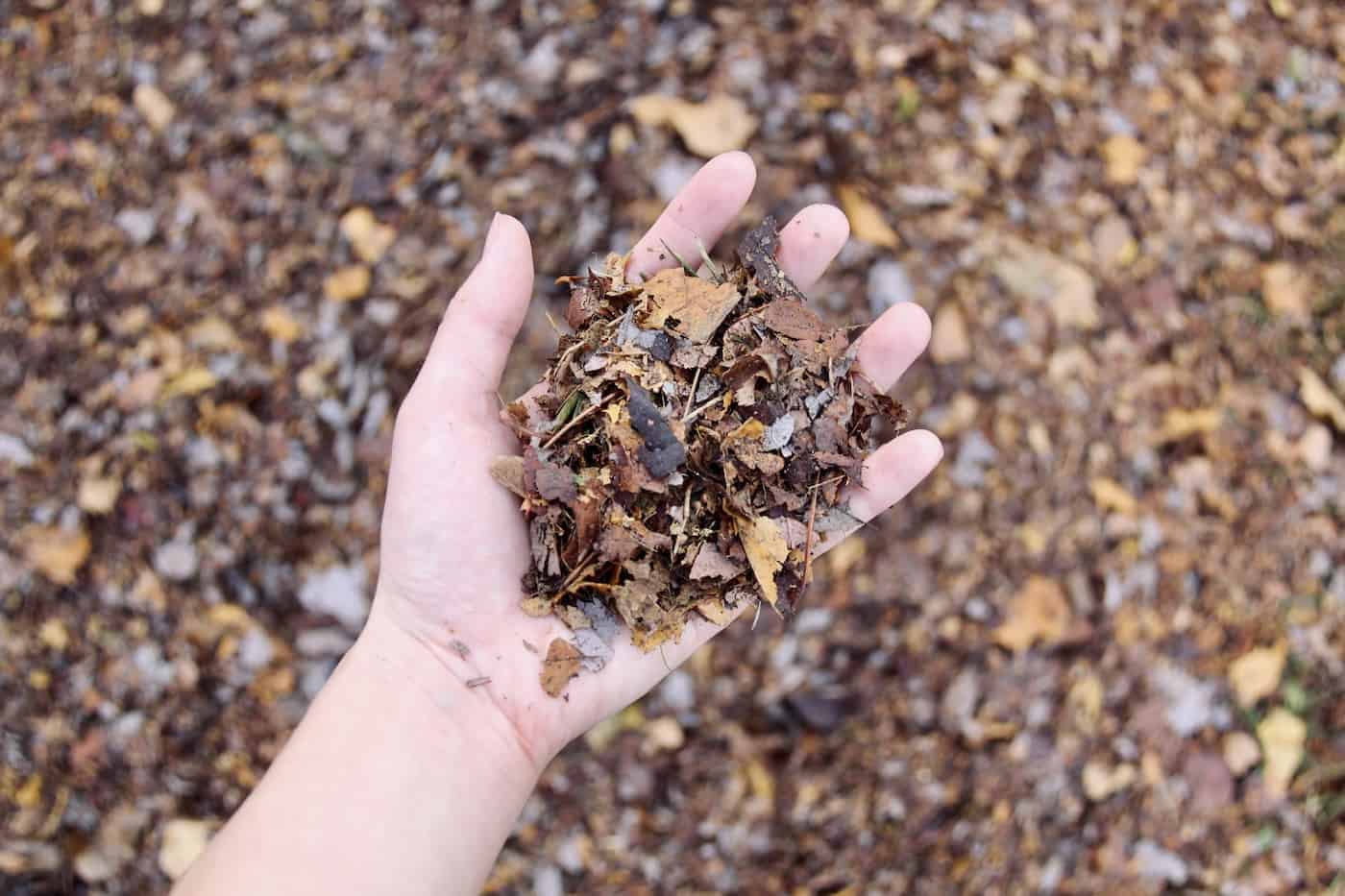
Shredded leaves are particularly effective as mulch because they decompose more quickly, enriching the soil with organic matter and essential nutrients. This decomposition process fosters a healthy soil ecosystem, promoting stronger plant growth. While slower to decompose, whole leaves can still be used effectively, especially in larger informal areas where a thicker layer of mulch is needed.
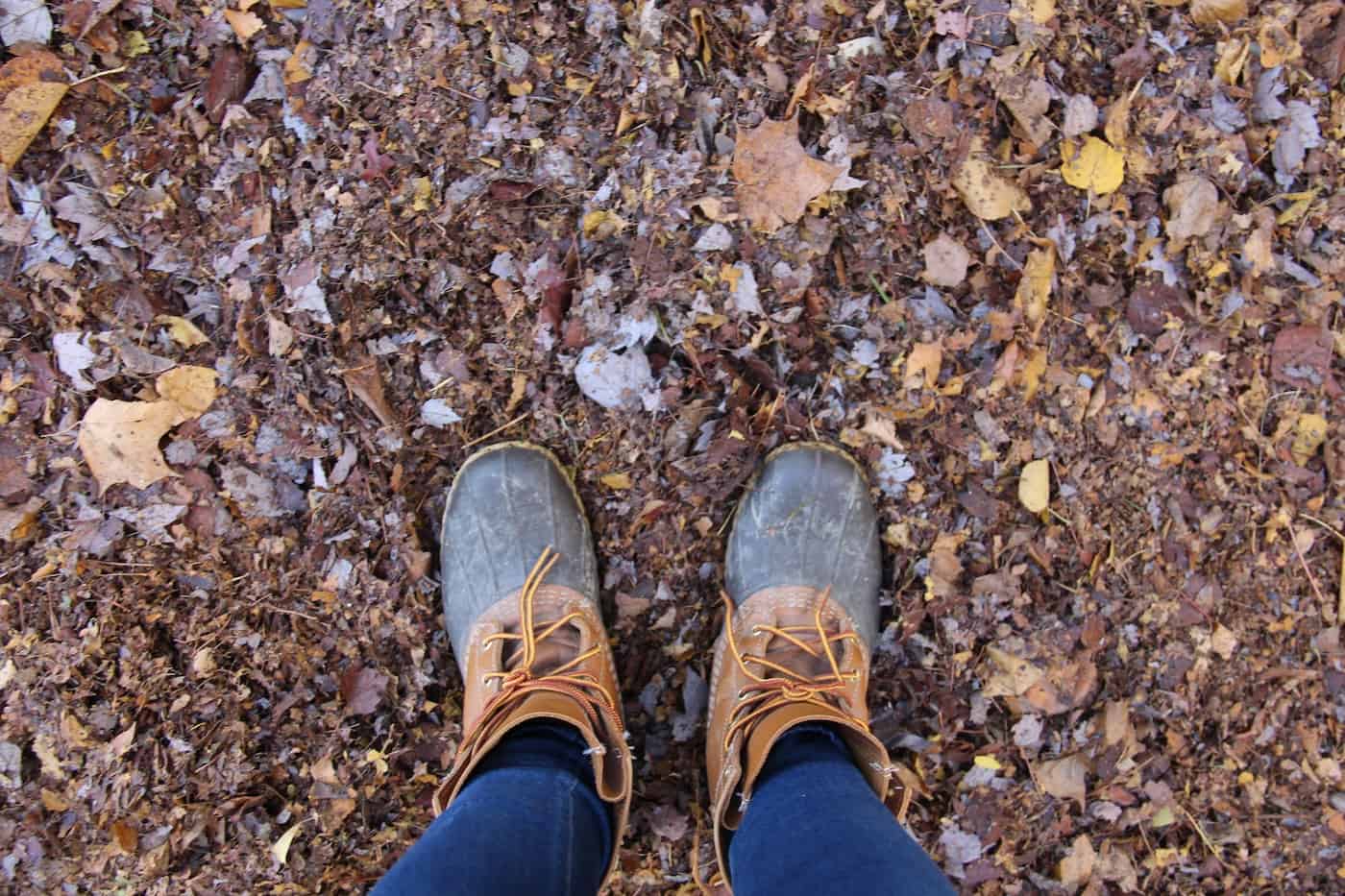
Using autumn leaves as mulch in vegetable gardens can greatly enhance soil quality. Shredded leaves are preferred in this setting as they are less likely to mat down and restrict water and airflow to the soil. As the leaves break down, they add humus to the soil, improving its structure and fertility. This process is beneficial for root development and overall plant health, contributing to a more productive vegetable garden.
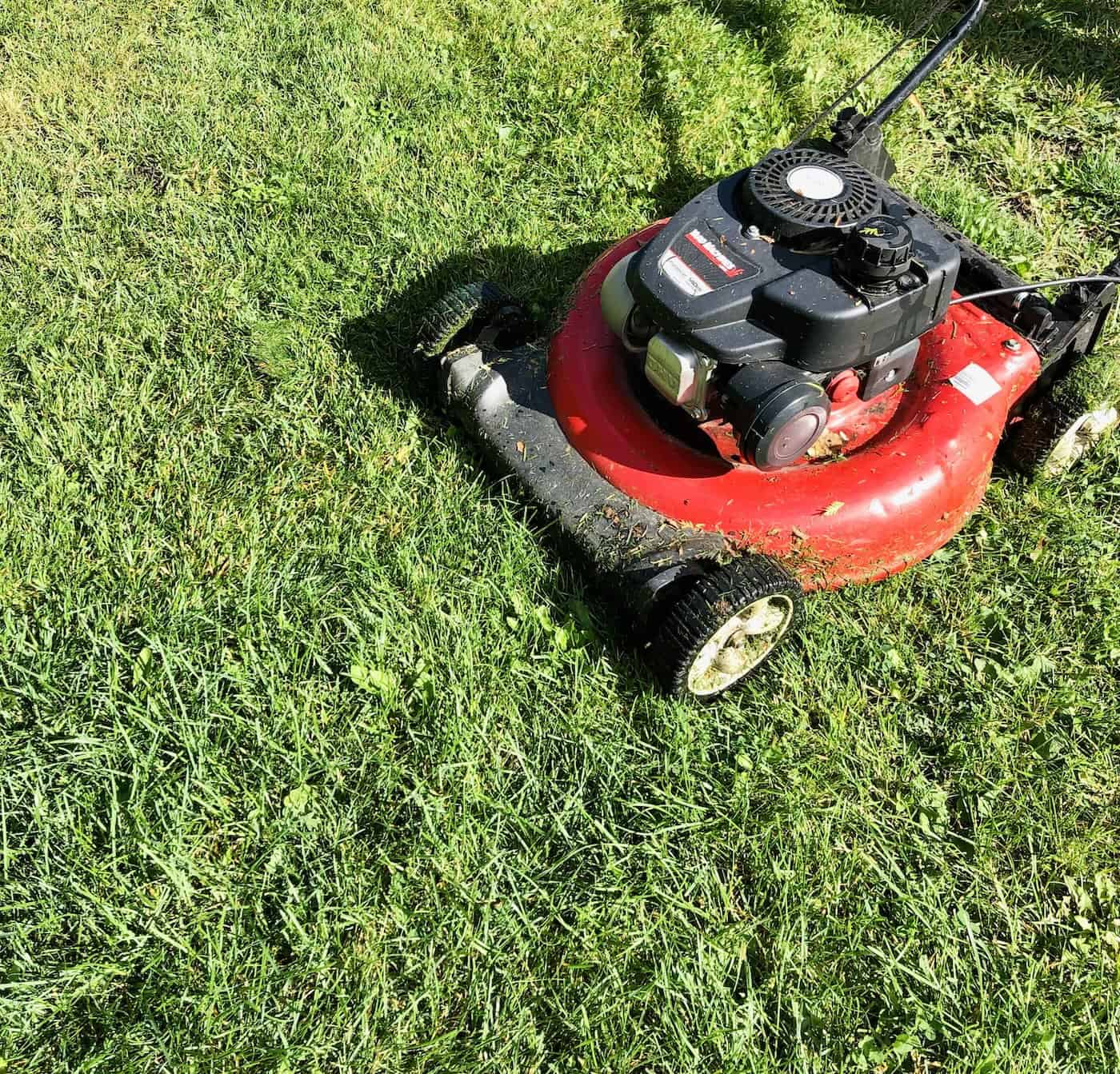
Grass clippings as mulch
Grass clippings from lawn mowing are a readily available and nutrient-rich option for organic mulching in various garden applications. In vegetable gardens, grass clippings can be highly beneficial. When applied as a thin layer, they help maintain soil moisture by reducing evaporation, which is crucial for the growth of vegetables. The clippings also act as a natural weed barrier, preventing weed seeds from germinating and competing with vegetable plants for nutrients.
As they decompose, grass clippings release nitrogen back into the soil, enhancing its fertility. This natural fertilization supports healthy plant growth and can reduce the need for additional fertilizers.
For flower beds, grass clippings can also serve as an effective mulch. They help in regulating soil temperature, keeping the roots of flowering plants cool in summer and warm in winter. Additionally, the clippings help in retaining soil moisture, reducing the need for frequent watering. It’s important, however, to ensure the grass clippings are free from lawn care chemicals and to apply them in a thin layer to prevent matting, which can hinder air and water flow to the soil.
Beyond garden beds, grass clippings can be used to mulch around trees and shrubs. This conserves moisture, suppresses weed growth, and adds organic matter to the soil as it decomposes. When using grass clippings as mulch in these areas, it’s crucial to avoid piling them directly against the trunk or stems, as this can cause moisture buildup and potentially lead to rot or disease.
